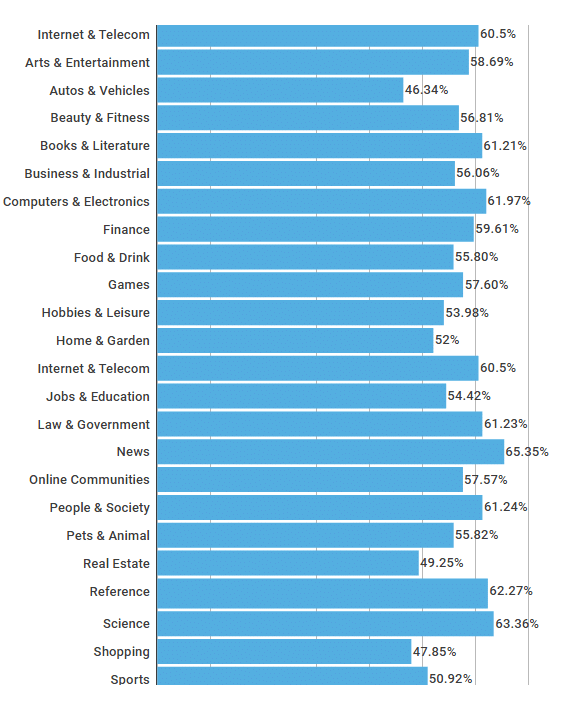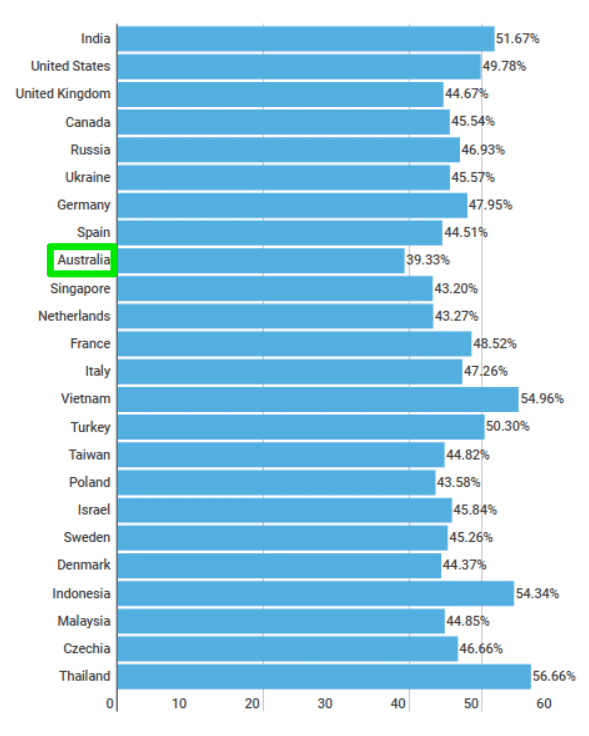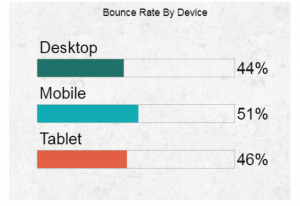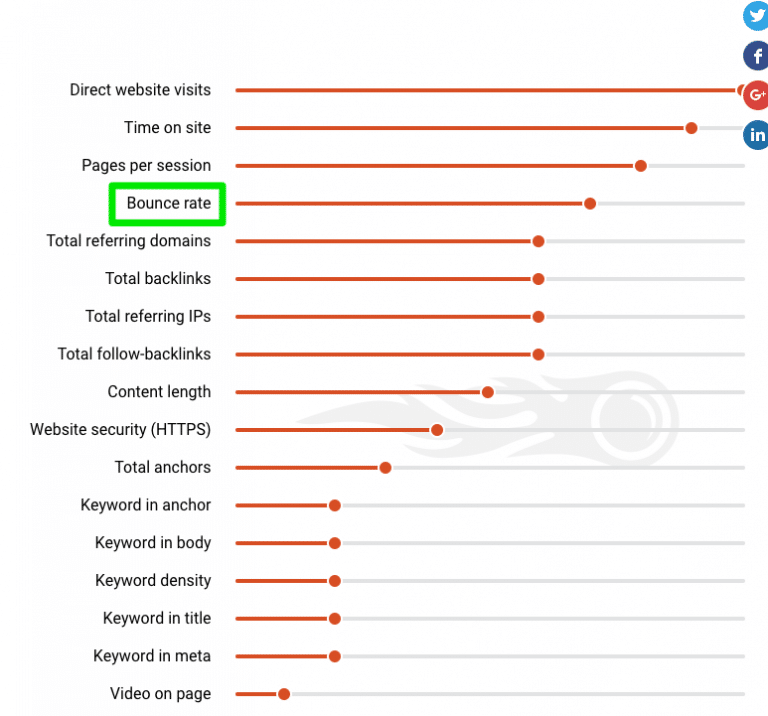
What’s a bounce rate?
A ‘bounce’ is a single-page session on a website, so ‘bounce rate’ is the percentage of visitors on your site who leave after viewing a single page.
How is bounce rate calculated?
Neil Patel says “It’s the average number of bounces across all of your pages divided by the total number of visits across all of those pages within the same period.”
For a single page, the bounce rate is “the total number of bounces divided by the total number of visits on a page.”
This is a simple explanation, but as SEO is often anything but simple, it pays to delve deeper if you’re to gain a comprehensive understanding of bounce rates and apply it to a marketing strategy.
According to Search Engine Journal, there are three ways to look at bounce rate — page level, site level and segmented — to better understand the metric and improve user engagement with your site:
Page level: At an individual page level, bounce rate is calculated by the total number of bounces on a page divided by the total number of visits.
Site level: At a site level, bounce rate is calculated by the total number of bounces across all the pages on the site divided by the total number of visits.
Segmented: A segmented bounce rate is calculated by the total number of bounces across a selection of pages (a segment of the site) divided by the total number of visits on that segment.
What’s a high bounce rate?
As you can see from the explanations above, measuring a bounce rate is a simple calculation.
However, comparing the bounce rates of two different sites — or two pages with different intent and/or format on the one site — is often anything but straightforward.
Generally speaking, the bounce rate for product pages is lower than pages designed for single sessions, like blog posts and video content.
This is important to take into account when calculating the bounce rate of your site if you have pages with different formats and templates.
As Google says, “If you have a single-page site like a blog, or offer other types of content for which single-page sessions are expected, then a high bounce rate is perfectly normal.”
What’s more, the traffic source can make a significant difference to bounce rates.

As an example, traffic from search will generally produce a lower bounce rate than display and social traffic for two main reasons:
- With inbound channels such as organic search and paid search, users are actively seeking what’s being promoted.
- With display and social, users are less likely to be actively looking for what’s been promoted on their news feed or as a banner ad on another site.
While social and display tend to have a higher bounce rate than inbound channels, that isn’t to say that a high bounce is necessarily bad and signifies that users aren’t engaging with a site.
And on the other hand, a low bounce rate isn’t necessarily good and an indication that users are engaging with a site.
What’s a good bounce rate?
Just as different pages and traffic sources should be taken into account when evaluating the bounce rate of a page or website, so too should factors such as industry, business type, user device and country.
For example, as shown in the Brafton 2017 Content Marketing Benchmark Report (and the below screenshot), B2B businesses experience higher bounce rates than B2C businesses.

Moreover, bounce rates also vary widely across different industries:

Different countries:

And devices:

Why is your bounce rate important for SEO?
Options differ on the importance of a site’s bounce rate for SEO.
SEMrush claims that bounce rate is the 4th most important SERP ranking factor.

However, according to Search Engine Journal, bounce rate isn’t included in Google’s algorithm metrics.
While it’s true that Google doesn’t directly use bounce rate as a ranking factor, it’s what the bounce rate of a website signifies that makes it such an important factor for SEO.
RankBrain (Google’s machine-learning artificial intelligence system) is the third-most important ranking factor of their algorithm, and its main purpose is to improve user’s search results with an in-depth understanding of their search intent.
In this regard, bounce rate is important because if a user lands on a page and leaves without any interaction, RankBrain may interpret this as the site not matching the intent of the user’s query.
If RankBrain interprets a search result as not matching search intent or providing positive user experiences, it may think that the search result shouldn’t be as high in the results as it is.
This could result in a rankings drop.
When you understand what bounce rate is and how it relates to your marketing goals, you can break down your site’s bounce rate and determine if visitors are interacting with your content.
This enables you to evaluate the efficiency of your digital marketing strategy with tools like Google Analytics and make changes accordingly.
Photo by Semir Ahmed Douibi
Located in leafy Spring Hill, Brisbane, Bambrick Media is a direct response digital marketing agency providing a full suite of digital marketing solutions. Our SEO and Google Ads specialists can get your bounce rate in line with your digital marketing goals.
From a website health check to an SEO Audit, our experts are here to help you maximise your marketing spend. Why not get in touch today?